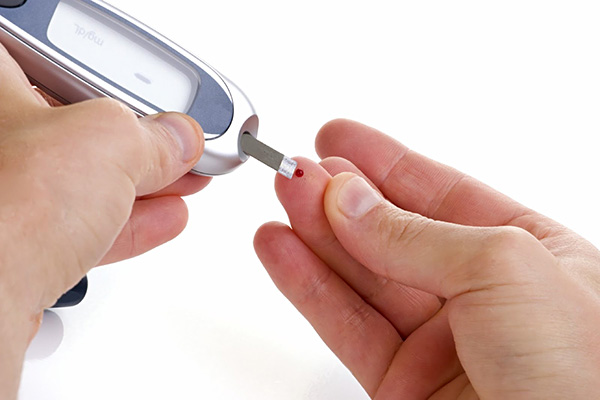Diabetes is an endocrine disorder characterized by metabolic abnormalities, especially of the carbohydrate metabolism. Diabetes mellitus occurs when the pancreas secretes insufficient amounts of insulin or when the way the body uses insulin is deficient. Insulin is the hormone that provides the cellular energy needs, through the use of sugar (glucose) by cells.
If insulin secretion is poor, or where there is resistance to its action in target tissues, blood sugar level (glucose) is too high, and tissues can not use glucose for energy production. If blood glucose is persistently increased, complications can occur in the eye, heart, blood vessels, nerves and kidneys. If your blood sugar reaches high values, this will produce a severe metabolic imbalance that characterizes diabetic ketoacidosis (DKA).
Type 1 diabetes occurs at any age, but is prevalent in children and young adults, this is why it is called by some the juvenile diabetes. Also, a term often used for type 1 diabetes is insulin-dependent diabetes. A form of type 1 diabetes is the latent autoimmune diabetes of the adult, with onset in adulthood, often confused with type 2 diabetes.
Type 1 diabetes is present in 5% -10% of all cases of diabetes. The most common form of diabetes is type 2 diabetes (non-insulin dependent diabetes), other forms of diabetes include gestational diabetes and secondary diabetes.
Planning for pregnancy:
Women with type 1 diabetes who become pregnant, need to go to the doctor to make sure they keep blood sugar levels under control. Hyperglycemia in the first trimester of pregnancy cause increased risk of fetal defects. A careful monitoring of blood glucose during pregnancy reduces the risk of fetal defects. Glycohemoglobin levels (hemoglobin A1c) must increase with less than 1% than the normal level. Diabetic women who do not want children can use contraceptive methods that reduce the risk of fetal defects due to unwanted pregnancies.
Causes:
Type 1 diabetes occurs due to autoimmune destruction of pancreatic beta cells that secrete insulin. Heredity plays an important role in the pathogenesis of type 1 diabetes. However, a large number of patients with type 1 diabetes does not have a family history of insulin-dependent diabetes. Therefore, experts believe that an important role in the etiology of diabetes, in addition to genetic predisposition, are certain environmental factors. One of the environmental factors involved in the production of diabetes, is usually an infectious agent such as Coxsackie B virus. The relationship between diabetes onset and vaccination against Haemophilus influenzae type b infection has not been demonstrated, although this hypothesis was formulated.
Symptoms:
Symptoms of type 1 diabetes occurs rapidly, within days or weeks and are due to increased levels of blood glucose. Early symptoms may go ignored by the patient, especially if the person has recently had the flu.
These early symptoms are:
- Frequent urination, especially at night. Some young children who already learned to use the toilet begin to have enuresis (to urinate in bed at night);
- Extreme thirst and dry mouth;
- Weight loss;
- Increased appetite;
Sometimes, blood sugar levels can reach very high values without the awareness of the suffering person. Since insulin is nonexistent, body cells can not use glucose to obtain energy. Because of this absolute deficiency of insulin, the body uses for energy the protein and lipid catabolism.
Burning lipids and proteins are thus greatly increased, causing excess ketones that enter in blood circulation. It produces one of the most severe complications of type 1 diabetes: diabetic ketoacidosis (DKA) whose symptoms are:
- – Dry skin, red, hot;
- – Decreased appetite, abdominal pain, vomiting;
- – Strong odor of breath, characteristic to that of acetone;
- – Rapid and deep breathing;
- – Agitation, drowsiness, confusion, coma;
- – Young children lose interest in daily activities;
The appearance of type 1 diabetes is caused by autoimmune destruction of pancreatic beta cells. The rate of destruction of the insulin secreting cell is variable, as, for children, the disease is suddenly installed because the beta cells are destroyed; whereas in adults, because the onset is slow. cell destruction occurs gradually.
Sometimes, symptoms of diabetes follow a viral infection (influenza).
Continue to the next page to read the full article:

